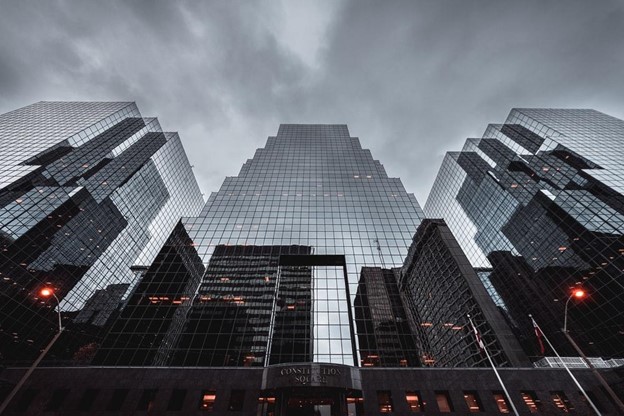Architectural buildings are proof of human evolution. They have been influenced by traditions, regions, trends, and dates. But as people’s lifestyles changed, so did the buildings. These changes aim to adapt to the human work and life environment, to create a place where you feel inspired, safe, and comfortable. Beyond the trends of modern houses, there’s still the need for functionality and well-thought design. So, in the following paragraphs, we’ll discuss what architecture has added to people’s lives and why our surroundings greatly impact our well-being.
Table of Contents
Promotes innovation
Architecture has constantly changed through the years, as countries have different influences from other cultures. From the beginning of time, people have tried their best to make buildings as beautiful and valuable as possible, and this goes on to this day. Let’s discuss innovation on the most known structures in the world:
- The Shanghai Tower is an excellent example of ingenious design: it captures rainwater for internal use, recycles wastewater, and helps reduce wind loads. At the same time, it’s topped with wind turbines that provide supplementary energy. The building has been awarded certifications from US Green Building Council and China Green Building Committee.
- The Council House 2 in Melbourne, Australia, has received the highest sustainability certification (Six Green Star) by providing numerous methods for reducing artificial heating and cooling. The architect has incorporated biomimicry (nature-inspired innovation) and other sustainable elements to create the perfect office building.
- In Sydney, you’ll find One Central Park committed to self-sufficiency. It’s one of the largest multi-residential buildings in the world that incorporates a low carbon power and water recycling plant, therefore providing heat and water sustainably.
Supports cultural heritage
Maintaining buildings doesn’t necessarily mean changing the aspect to a modernist appearance but preserving our cultural heritage while adding technology facilities. For example, in the UK, you’ll see that most houses have the same medieval architecture. Still, inside the buildings, you can benefit from the same appliances and energy-related installation as a typical building. At the same time, architects have come up with new methods of preserving old constructions to maintain the country’s identity.
But supporting cultural heritage is not easy. Architects have to work in dangerous environments, as their health can be affected by prolonged hours on the site, leading to physical injuries and burnout. Although designing buildings is as important as building them, architects don’t get the same health protection from employers. But that doesn’t mean you can’t speak up about the poor treatment and file a claim in the UK if you’ve experienced an injury in the workplace. Even if construction workers are more exposed to greater injuries, as an architect, you can still be vulnerable to fires, explosions, trench collapse, and equipment-related accidents due to poor training and lack of protection.
Prevents natural disasters
The first purpose of a building is to provide shelter. But while climate change worsens, natural disasters are occurring more than ever and have disastrous results on communities. For example, in the UK, extreme weather has affected its wildlife, destroyed hectares of land, and negatively impacted bird species. But along with these problems, many people have lost their homes due to floods or storms. Sadly, most buildings are not designed for these situations or built with high-quality materials. Here is where architecture can help people.
In certain areas, it would be best to perform examinations for the most expected disasters and build structures as required. For example, in places where earthquakes are frequent, it is believed that lightweight and natural elements can increase resiliency, which doesn’t apply to areas prone to flooding. In such places, highly-resistant materials are required, like bricks and metals on the walls and ceiling and a combination of concrete, latex, and vinyl on the floor. As for lowering hurricane damages, curvy designs are known for their aerodynamic features and are resistant to the wind’s forces.
Advocates for the environment
Sustainability in the architectural industry is related to performance and creative empathy. When designing a building, architects need to come up with solutions to local problems, which can greatly impact people’s lives.
Community architecture draws people in, making them feel at home while keeping natural and modern elements altogether. For example, if you’re looking for this type of architectural design in the UK, the Harraby Community Campus has been imagined as a learning landscape, with compactness and traditionality as core values. At the same time, the interior is defined through urban lines and plenty of natural lighting to offer a sense of kinship for children.
But that’s not all. Architecture continuously promotes environmental awareness through sustainability practices, conservation efforts, and the creation of spiritual places that make people feel at home. By sticking to the landscape’s natural features in the architectural process, people can benefit from a better mood and lower stress.
Encourages public health
Lastly, architecture can change the world by adding elements encouraging public health. You may know that the environment you live in will impact your well-being. In response, design and psychology have merged to understand how people’s surroundings affect their behavior.
An example of these movements is the rise of bike paths and streets connecting to parks and greenways, encouraging people to move and get out of the house. On the contrary, the food infrastructure is known to promote obesity and decreased physical activity through low densities and poor street connectivity. These structures are also designed to draw people in, not for their well-being, but to consume as much as possible.
This is why providing solutions for encouraging health, like adding more aesthetically pleasing stairs in the malls, can change people’s behaviors. There’s even a special term for this trend, called salutogenic design, that aims to build structures that make people healthier and happier. Its principles enrich a sense of meaningfulness and improve manageability – which should be a worldwide standard for buildings.
In the end, architecture is more than building beautiful structures; it’s about providing environments that encourage a happy and healthy lifestyle while focusing on accessibility and innovation.







